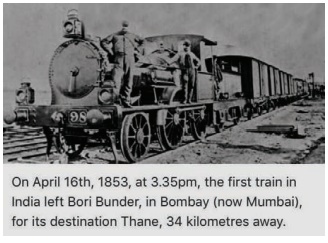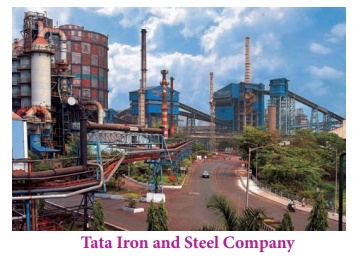Period of Radicalism in Anti-imperialist Struggles | History - Industrial Development in India | 12th History : Chapter 5 : Period of Radicalism in Anti-imperialist Struggles
Chapter: 12th History : Chapter 5 : Period of Radicalism in Anti-imperialist Struggles
Industrial Development in India
Industrial Development in India
The
British trade policy took a heavy toll on the indigenous industry.
Industrialization of India was not part of British policy. Like other colonies,
India was treated as a raw material procurement area and a market for their
finished goods.
Despite
this, industrial expansion took place in India, because of certain unforeseen
circumstances, first during the course of the First World War and then during
the Great Depression.

The first
Indian to start a cotton mill was Cowasjee Nanabhoy Davar (1815–73), a Parsi,
in Bombay in 1854. This was known as the Bombay Spinning and Weaving Company.
The city’s leading traders, mostly Parsis, contributed to this endeavour. The American
Civil War (1861–65) was a boon to the cotton farmers. But after the Civil War
when Britain continued to import cotton from America, Indian cotton cultivators
came to grief. But Europeans started textile mills in India, taking advantage
of the cheapness of cotton available. Ahmedabad textiles mills were established
by Indian entrepreneurs and both Ahmedabad and Bombay became prominent centres
of cotton mills. By 1914, there were 129 spinning, weaving and other cotton
mills within Bombay presidency. Between 1875–76 and 1913-14, the number of
cotton textile mills in India increased from 47 to 271.

An
important landmark in the establishment of industries in India was the
expansion of the railways system in India. The first passenger train ran in
1853, connecting Bombay with Thane. By the first decade of the twentieth
century, railways was the biggest engineering industry in India. This
British-managed industry, run by railway companies, employed 98,723 persons in
1911. The advent of railways and other means of transport and communication
facilities helped the development of various industries.
Jute was
yet another industry that picked up in India in the late nineteenth and early
twentieth century. The first jute mill in Calcutta was founded in 1855. The
growth of jute industry was so rapid and by 1914, there were 64 mills in
Calcutta Presidency. However, unlike the Bombay textile industry, these mills
were owned by Europeans. Though the industrial development in the nineteenth century
was mainly confined to very limited sectors like cotton, jute, etc., efforts
were made to diversify the sectors. For example, the Bengal Coal Company was
set up in 1843 in Raiganj by Dwarakanath Tagore (1794–1847), grandfather of
Rabindranath Tagore. The coal industry picked up after 1892 and its growth
peaked during First World War years.

It was in
the early twentieth century, industries in India began to diversify. The first
major steel industry – Tata Iron and Steel Company (TISCO) – was set up by the
Tatas in 1907 as a part of swadeshi effort in Sakchi, Bihar. Prior to this, a
group of Europeans had attempted in 1875 to found the Bengal Iron Company.
Following this, the Bengal Iron and Steel Company was set up in 1889. However,
TISCO made a huge headway than the other endeavourers in this sector. Its
production increased from 31,000 tons in 1912–13 to 1,81,000 tons in 1917–18.

The First
World War gave a landmark break to the industrialisation of the country. For
the first time, Britain’s strategic position in the East was challenged by
Japan. The traditional trade routes were vulnerable to attack. To meet the
requirements, development of industries in India became necessary. Hence,
Britain loosened its grip and granted some concessions to the Indian capitalists.
Comparative relaxation of control by the British government and the expansion
of domestic market due to the War, facilitated the process of
industrialisation. For the first time, an industrial commission was appointed
in 1916. During the war-period, the cotton and jute industries showed much
growth. Steel industry was yet another sector marked by substantial growth.

Jamsetji Nusserwanji Tata, popularly known as J. N. Tata (1839–
1904), came from a Parsi (Zoroastrian) business family in Navsari, Baroda. The
first successful Indian entrepreneur, he is called the father of the Indian
modern industry. In order to help his father’s business, he travelled all over
the world and this exposure helped him in his future endeavours. His trading
company, established in 1868, evolved into the Tata Group. A nationalist, he
called one of the mills established in Kurla, Bombay “Swadeshi”. His children
Dorabji Tata and Ratanji Tata followed his dream and it was Dorabji Tata who
finally realised the long term dream of his father to establish an iron and
steel company in 1907. His enthusiasm was such that he spent two years in US to
learn from the American Iron Industrialists. His yet another dream to set up a
hydroelectric company did not materialize during his life time. However, the
first major Hydroelectric project – Tata Hydroelectric Company–was set up in
1910. With great foresight the Tatas founded the Indian Institute of Science,
Bangalore.
Other
industries showing progress were paper, chemicals, cement, fertilisers,
tanning, etc. The first Indian owned paper mill – Couper Paper Mill – was set
up in 1882 in Lucknow.
Following
this, Itaghur Paper Mill and Bengal Paper Mill, both owned by Europeans, were
established. Cement manufacturing began in 1904 in Madras with the
establishment of South Indian Industries Ltd. Tanning industry began in the
late nineteenth century and a government leather factory was set up in 1860 in
Kanpur. The first Indian-owned National Tannery was established in 1905 in
Calcutta. The gold mining in Kolar also started in the late nineteenth century
in the Kolar mining field, Mysore.
The
inter-war period registered growth in manufacturing industries. Interestingly
the growth rate was far better than Britain and even better than the world
average. After a short slug in 1923–24, the output of textile industry began to
pick up. During the interwar period, the number of looms and spindles increased
considerably.
In
1929–30, 44 per cent of the total amount of cotton piece goods consumed in
India came from outside, but by 1933–34, after the Great Depression, the
proportion had fallen to 20.5 percent. Other two industries which registered
impressive growth were sugar and cement. The Interwar years saw a growth in the
shipping industry too. The Scindia Steam Navigation Company Limited (1919) was
the pioneer. In 1939, they even took over the Bombay Steam Navigation Company
Ltd., a British concern. Eight Indian concerns were operational in this sector.
A new phase of production began with the Second World War, which led to the
extension of manufacturing industries to machineries, aircrafts, locomotives,
and so on
Industrial Development in Tamilnadu during the Depression
The
industrial growth in the Madras Presidency was substantial. In Coimbatore,
after Stanes Mill (Coimbatore Spinning and Weaving Mills) was established in
1896, no other mill could come up. The objective conditions created by the
Depression like fall in prices of land, cheapness of labour and low interest
rates led to the expansion of textile industry in Coimbatore. Twenty nine mills
and ginning factories were floated in the Coimbatore area during 1929-37. A
cement factory started at Madukkarai in Coimbatore district in 1932 gave fillip
to the cement industry in the state. The number of sugar factories in the
province rose from two to eleven between 1931 and 1936. There were also
proliferation of rice mills, oil mills and cinema enterprise during this
period.

Related Topics